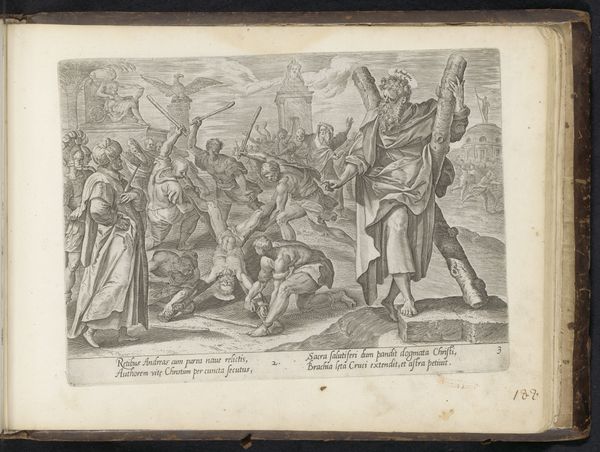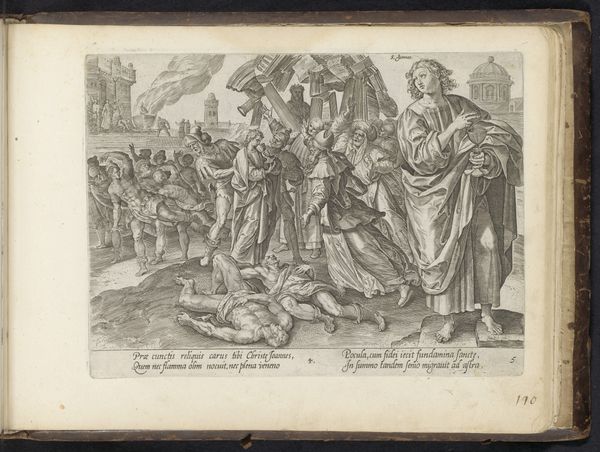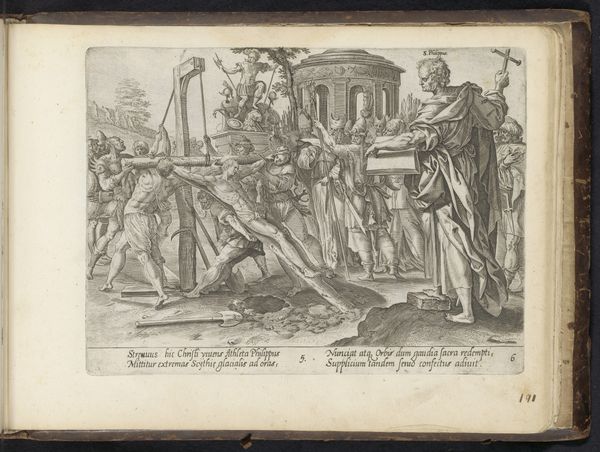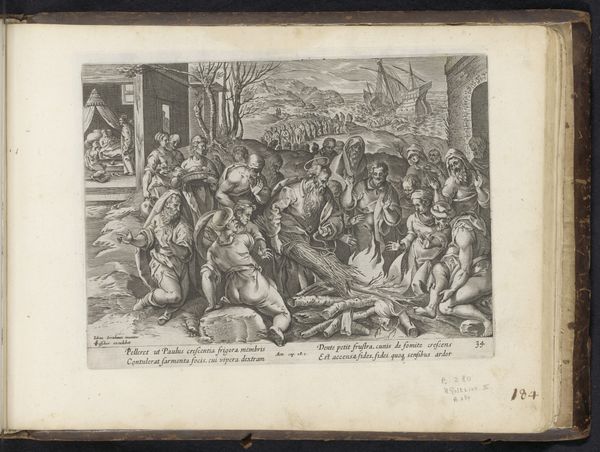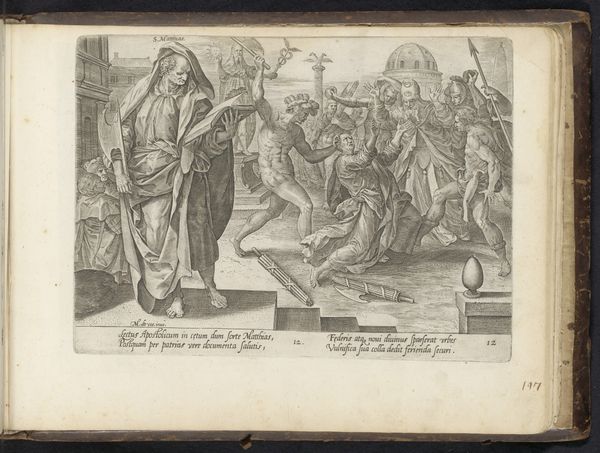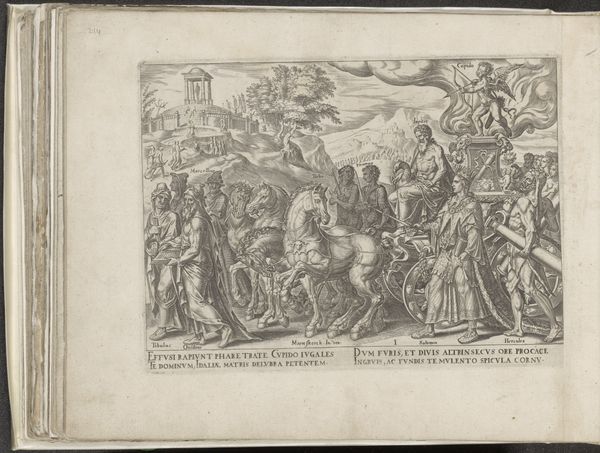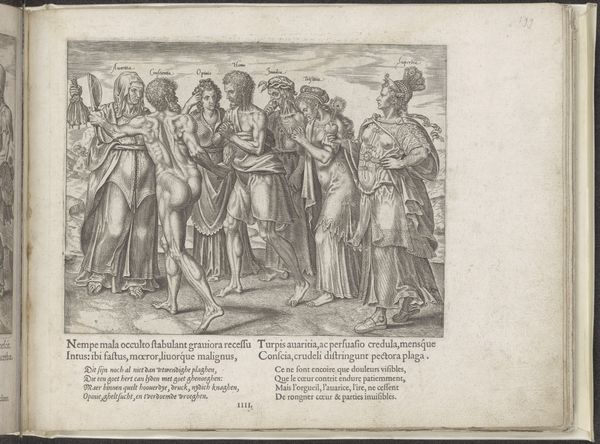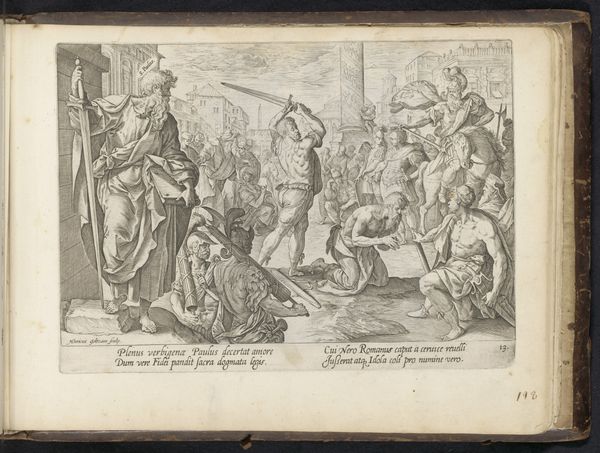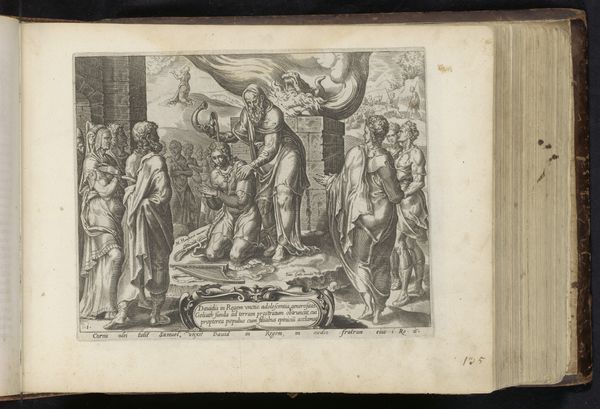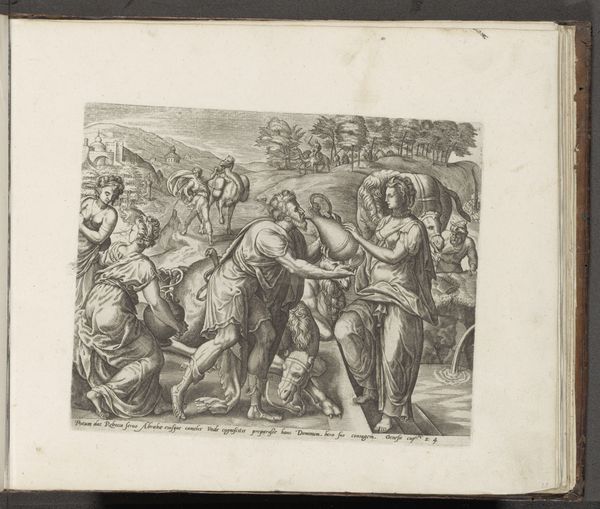
print, etching, intaglio, engraving
#
narrative-art
# print
#
etching
#
intaglio
#
figuration
#
11_renaissance
#
history-painting
#
northern-renaissance
#
engraving
Dimensions: height 207 mm, width 285 mm
Copyright: Rijks Museum: Open Domain
Editor: This is an etching called "Crucifixion of Christ," dating from between 1576 and 1646, and made by an anonymous artist. It's currently held in the Rijksmuseum. It's quite striking; I am caught by how it merges Christ’s agony with a sense of his divine power. What’s your take on this complex piece? Curator: I see here a clear demonstration of the social function of art in the Northern Renaissance. Consider how this image would have been consumed. As an engraving, it was relatively reproducible. It’s not merely a devotional image but a powerful tool in shaping religious and political identities. Note Christ holding an orb, and the tools preparing to crucify him at the same time; How does that juxtaposition strike you? Editor: Well, it feels contradictory. The orb suggests dominion, yet he’s utterly vulnerable. Is that a tension the artist is deliberately playing with? Curator: Precisely. It's about communicating power but also humility, reflecting the religious and political turbulence of the time. The layering of the scene, with the looming crowd and architecture in the background, and the inscription, reminds us that images were very much public tools with great persuasive power during that era. And that raises a larger question. Can we truly isolate artistic interpretation from the circumstances surrounding the art object’s consumption? Editor: That makes me think about how the context dramatically changes our viewing experience. Thank you; this was very helpful. Curator: It certainly highlights the importance of considering art as part of a larger socio-political narrative.
Comments
No comments
Be the first to comment and join the conversation on the ultimate creative platform.
